Among awake, alert patients,
painless straight leg raise can exclude pelvic fractures
(100% sen + 100% NPV)
and be incorporated into initial examination during reception and resuscitation of injured patients.
- Pelvic ring fx
- Sacral fx
- Acetabular fx
- Avulsion injuries
- High energy
- High morbidity : 常合併胸腹腦部受傷, 神經血管損傷
- High mortality
Associated injuries :
- Hemorrhage
- Intraabdominal
- Bladder and urethra
- Neurologic
- Thoracic aorta rupture
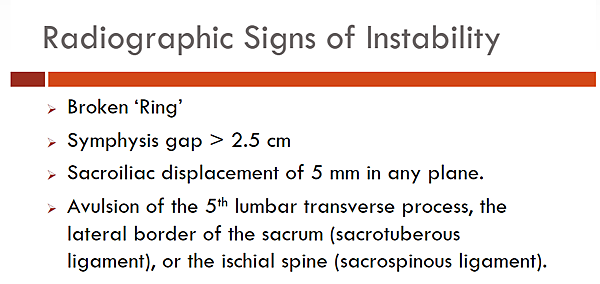
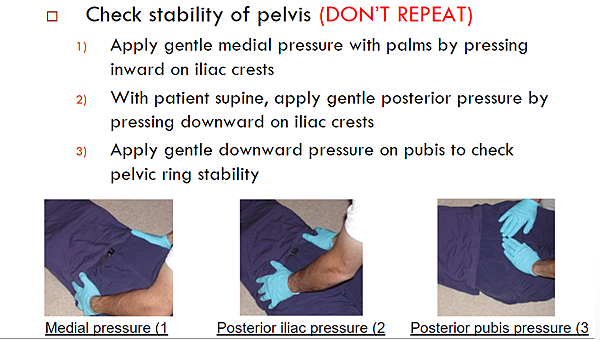
- External bleeding, Ecchymosis (flank, perineal, and scrotal)
- Blood at the penile meatus, vaginal bleeding
- Position of the lower extremities and iliac crests
- Do not neglect to inspect the back, gluteal region, and pannicular folds.
- Palpation of bony landmarks, range of motion, neurovascular examination
- Important bony landmarks to palpate include the iliac crests, pubic symphysis, sacrum,
sacroiliac joints, and greater trochanters. - Rectal and vaginal examinations should be carefully completed to assess for open fractures.
Pelvic ring fractures
When the ring is broken, most often two fractures occur.
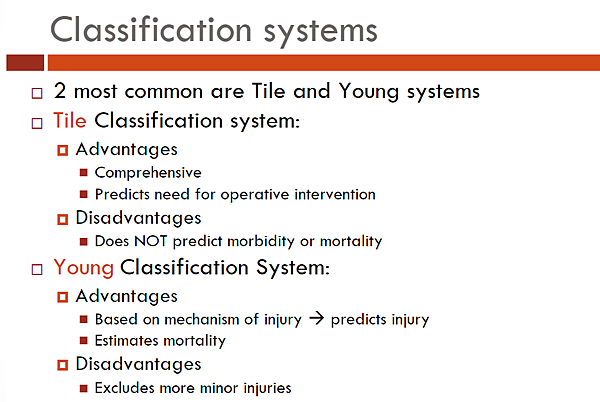
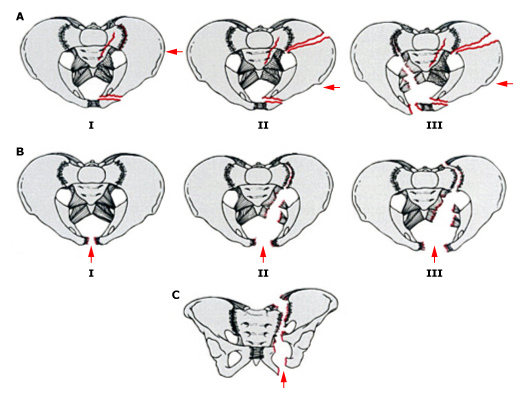
(A) Lateral compression injuries with subsequent bilateral involvement as forces increase
(B) Anteroposterior injuries with progression of injury
(C) Vertical shear injury
LC I : sacral fracture on side of impact, Most common
LC II : crescent fracture on side of impact
LC III : type I or II injury on side of impact with contralateral open book injury
APC I : minor opening of symphysis and SI joint anteriorly
APC II : opening of anterior SI, intact posterior SI ligaments
APC III : complete disruption of SI joint
Open-book fracture :
- An anterior injury (either widening of the pubic symphysis or rami fractures or both)
and a posterior pelvic fracture or ligamentous injury.
LC, APC, vertical shear injuries may all be termed open-book
based upon the extent of injury and anterior widening.
When the anterior pelvic ring widens more than 2.5 cm
the posterior pelvis (especially the anterior portion of the sacroiliac ligamentous complex)
is frequently injured, increasing the risk of hemorrhage
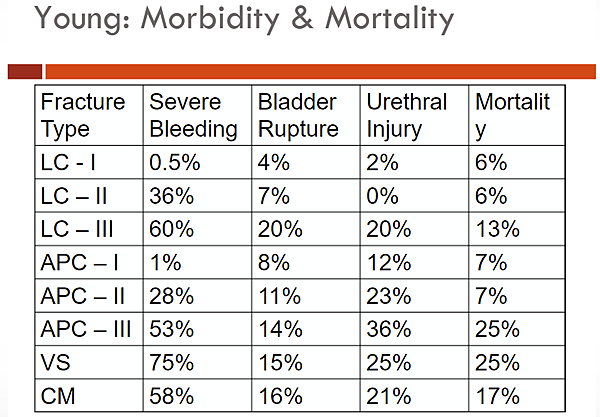
另一個分類 : AO classification
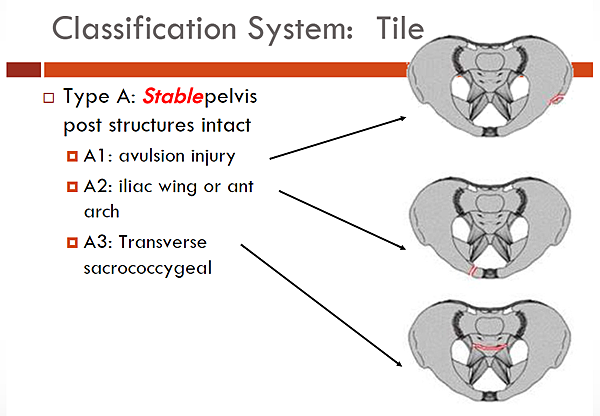
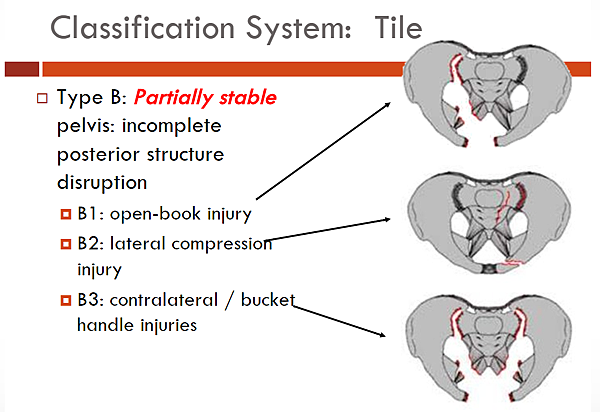
B2 就是最常見的 LC1 !!
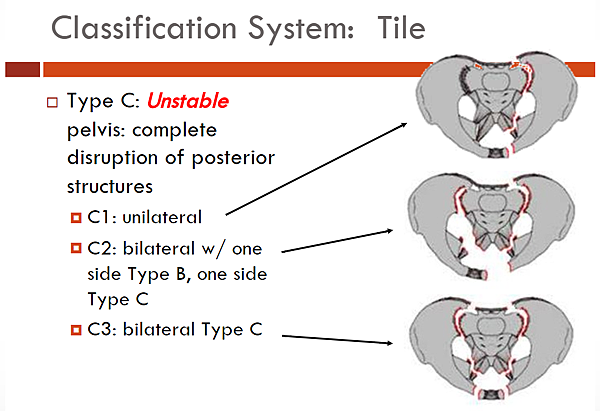
Surgical indication :
- Type B
- 後面的 SI joint 位移 > 1cm
- 恥骨聯合分開 > 2.5cm
- 骨折縫隙 > 5mm
- 長短腳超過 2 cm ( type B2)
- All type C
Sacral fracture
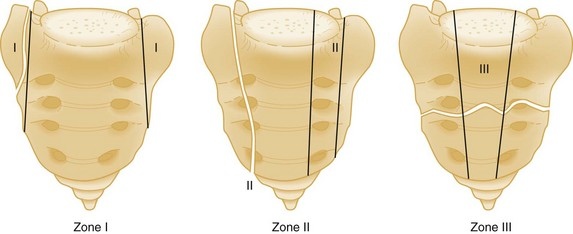
This classification assist with predicting neurologic injury :
- Zone 1 – Lateral to the sacral neural foramina (5.9% usually L5 root)
- Zone 2 – Through the sacral neural foramina
(28.4%, predominately sciatica with rare bladder or bowel involvement) - Zone 3 – Medial to the sacral neural foramina through the central canal
(≥50 %; most involve bowel, bladder, or sexual dysfunction)
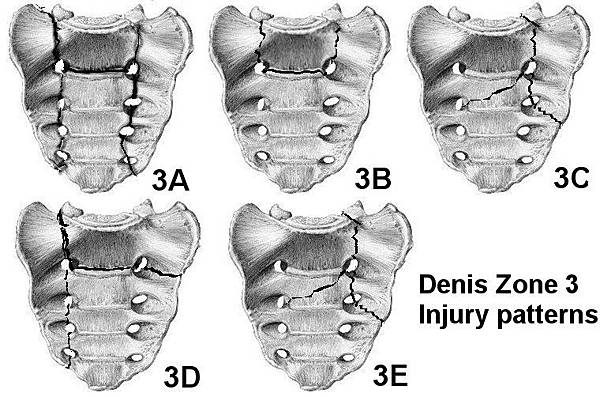
Acetabular fractures
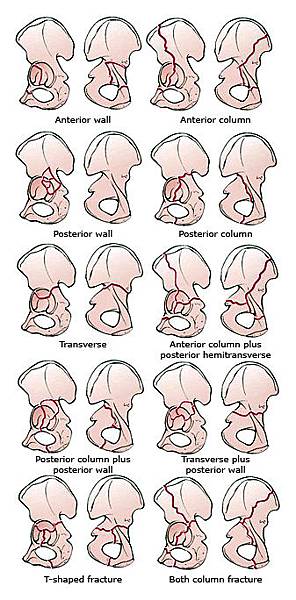
Avulsion fractures
most often occur in skeletally immature athletes aged 14-17 years
The most common sites and muscles involved :
- Anterior superior iliac spine(sartorius)
- Anterior inferior iliac spine (rectus femoris)
- Ischial tuberosity (hamstrings)
In adults, avulsion fractures in the absence of trauma
should be considered pathological until proven otherwise.



 留言列表
留言列表


